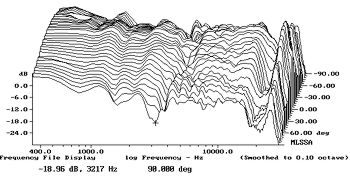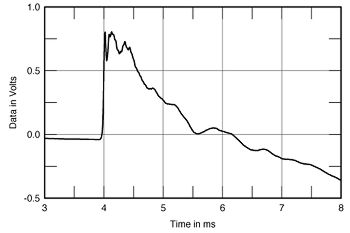| Columns Retired Columns & Blogs |
Vandersteen 2Ce Signature loudspeaker Measurements part 2
Fig.4 shows the Vandersteen's lateral dispersion. There are persistent notches at 1.6kHz and 3.2kHz, and some roughness in the responses in the mid-treble, perhaps due to early reflections from the top panel and the dowels that support it, but the 2Ce's radiation pattern is generally even and well-controlled. In the vertical plane (not shown), the speaker's balance doesn't change significantly between the midrange and tweeter axes. At 4.8kHz, however, a suckout develops level with the top of the speaker.

Fig.4 Vandersteen 2Ce Signature, lateral response family at 50", from back to front: responses 90 degrees-5 degrees off-axis, reference response on tweeter axis, responses 5 degrees-90 degrees off-axis.
The Vandersteen's impulse response (fig.5) indicates time coherence overlaid with ultrasonic ringing from the tweeter and some early reflections. The step response (fig.6) has a superbly coherent right-triangle shape, over which, again, some reflections can be seen. These are presumably from the supports for the black "sock" and the speaker's separate top panel. The speaker's cumulative spectral-decay plot (fig.7) indicates quite a lot of delayed energy, but again, this is more likely to be due to the early reflections than to resonances per se.—John Atkinson

Fig.5 Vandersteen 2Ce Signature, impulse response on tweeter axis at 50" (5ms time window, 30kHz bandwidth).

Fig.6 Vandersteen 2Ce Signature, step response on tweeter axis at 50" (5ms time window, 30kHz bandwidth).

Fig.7 Vandersteen 2Ce Signature, cumulative spectral-decay plot at 50" (0.15ms risetime).
- Log in or register to post comments




































